
views
- Combine 1-3 tsp (3-9 g) of arrowroot powder with 2-3 tsp (6-9 g) of either cocoa powder, cinnamon, or nutmeg, depending on your target skin shade.
- Add turmeric or blush to adjust the powder's undertone, and mix it until it's completely incorporated. Brighten it with cornstarch, if needed.
- Mix 3 pumps of moisturizer, 1 tsp (3g) of powdered foundation, and essential oil in a bowl to make a liquid foundation out of a powdered foundation.
Making Powdered Foundation
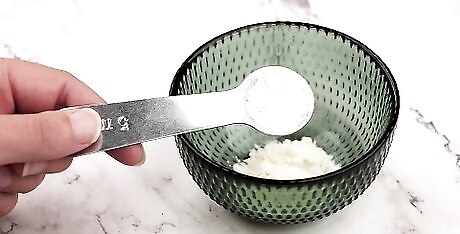
Place 1 to 3 teaspoons (3 to 9 g) of arrowroot powder into a bowl. The more you use, the lighter your foundation will be. If you don't have arrowroot powder, you can use cornstarch instead, but be aware that some people have reported that it does not work well on acne-prone skin. There's no set formula, since there are so many different skin tones. You will likely need to adjust the proportions later. In general, if you have dark skin, use 1 teaspoon (3 g); if you have fair skin, use up to 3 teaspoons (9 g).

Stir in cocoa powder, cinnamon, or nutmeg until you get your skin tone. Unsweetened cocoa powder will be the least irritating on your skin, but you can use cinnamon or nutmeg if you don't have access to it. Keep in mind that cinnamon and nutmeg are potent, so you'll only need a pinch. The darker your skin tone is, the more cocoa powder, cinnamon, or nutmeg you'll have to use. You may have to use up to 2 or 3 teaspoons (6 to 9 g). Don't worry if it doesn't match your skin color exactly. This is just the shade; you'll worry about the undertone next.

Adjust the undertone with turmeric or blush. If you compare skin color, you'll notice that some people have yellowish skin while others have pinkish. This is known as "undertone." Since cocoa powder, cinnamon, and nutmeg don't have any yellow or pink in them, you'll need to add that in. If you have yellowish undertones, add a pinch of ground turmeric. You can also scrape some yellow-toned eyeshadow into the powder instead. If you have pinkish skin, scrape some pink or red-toned blush into the powder instead. You can also try pink or red-toned eyeshadow.

Stir the powder until the color is consistent. It does not matter what tool you use for this, as long as it is clean. A small spoon or fork would do just fine, but you can also use a toothpick or craft stick. Be sure to break up any clumps. You want the powder to be as fine as possible. If the powder is too clumpy, sift it through a fine, mesh sieve into a new container.
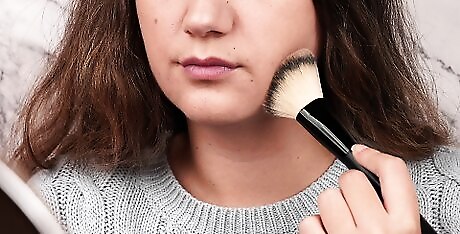
Test it against your jawline. Use a clean powder brush or eyeshadow brush to apply the foundation to your jawline. Don't worry about being too precise here; you are just testing out the color here.
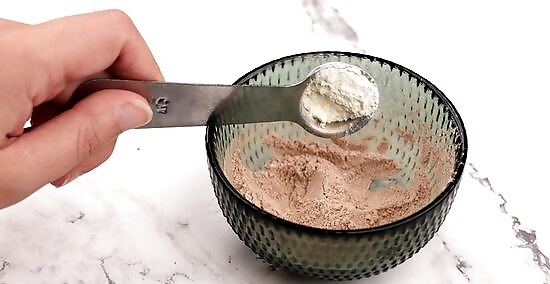
Adjust the color with additional ingredients, if needed. Since there are so many different skin tones out there, there is no set formula for homemade foundation. As such, you will likely need to adjust the foundation until it matches your skin a little more closely. For example: If the powder is too dark, add more arrowroot powder or cornstarch. If the powder is too light, add more cocoa powder, cinnamon, or nutmeg. If the powder is too yellow, add some blush; if it's too pink, add some turmeric.
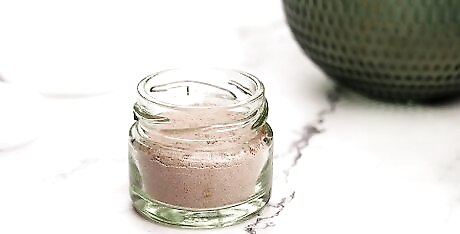
Store the powder in a sterilized container. Once you have the exact shade you want, the foundation is ready to go! Clean a small jar with hot, soapy water, then dry it thoroughly with a paper towel. Pour the powder into the jar, then close it tightly. An empty powder container would work well for this.
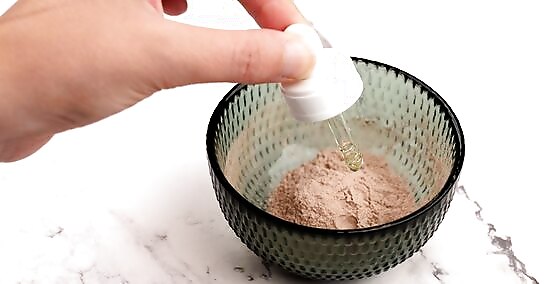
Add 5 drops of facial oil and press it into a compact for pressed powder. Start with 5 drops of your desired facial oil, then add more if needed; you are looking for a thick, paste-like consistency. Transfer the paste into a clean powder compact, and smooth it down. Let it dry before you use it. Almond oil, jojoba oil, or olive oil are all great options. Discard any excess foundation or make a second compact. This step is optional. You don't have to make pressed powder if you don't want to.

Apply the foundation with a powder brush. Use a dabbing motion for more coverage, and a circular motion for sheer coverage. If you made pressed powder, you may be able to apply it with a makeup sponge instead. There will be a slight fragrance, but it will fade as the day goes on. Be sure to tap off any excess powder first, especially if you kept it loose. If the powder does not stick well to your skin, apply some moisturizer first.
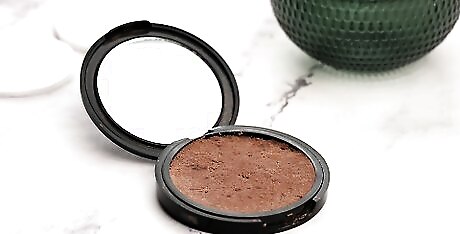
Store the powder in a cool, dry place. This powder can be stored indefinitely, but it may discolor overtime. If it starts to look or smell different, discard it immediately. Like with regular powdered foundation, be careful not to get it wet.
Making Liquid Foundation

Place a small amount of facial oil or moisturizer into a small dish. There is no set amount for this, so you can use however much or little you want. Remember, you can always adjust the consistency later. If your moisturizer came with a pump, about 3 squirts would be plenty. For an all-natural foundation, stick with the facial oil. Almond, jojoba, and tamanu are all great options. If you are using moisturizer, consider using something with added SPF. This is not completely necessary, but it's a great way to protect your skin!
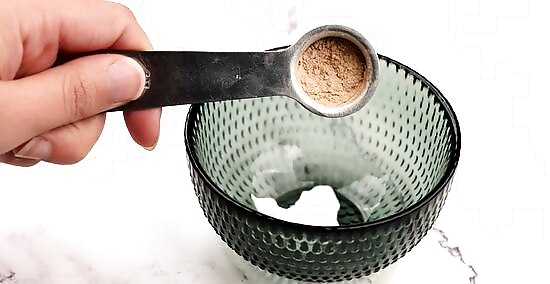
Add about 1 teaspoon (3 g) of powdered foundation. This will be enough to give you medium coverage, but again, you can always adjust the consistency later. In general, plan on using twice as much powder as oil or moisturizer. Loose powder will be the easiest to work with. If your foundation is pressed, scrape out a small amount, then grind it through a fine, mesh sieve. Make sure that the foundation matches your skin tone.
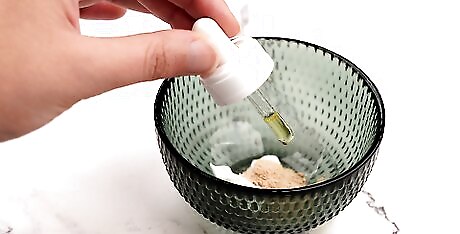
Add 1 to 2 drops of essential oil, if desired. This is not completely necessary, but it will add some nice fragrance to your foundation, especially if you used oil. Great options include: chamomile, lavender, frankincense, and geranium. Make sure that you use essential oil and not fragrance oil meant for candle making or diffusers; they are not the same thing. Avoid using more essential oil than this. It is concentrated, so a little bit goes a long way. Do not use any citrus essential oil, as it will make your skin sensitive to sunlight and result in severe sunburn. If you used moisturizer instead of oil, you may want to skip the essential oil. This is because many moisturizers already contain fragrances.
Stir the foundation until the texture is consistent. A small spoon or spatula will work the best here, as it’ll come in handy for mashing the clumps out. You may have to press down on the clumps in order to get them out.
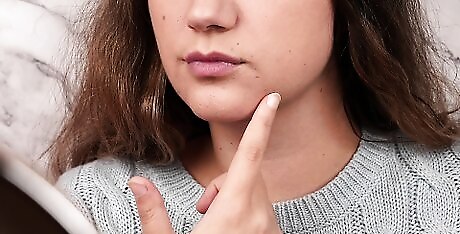
Test the foundation on your skin. Use your fingertip to apply a small amount of foundation along your jawline. The foundation should match your skin tone, so pay attention to the coverage instead. Don't worry about blending in the foundation. This is simply a test.
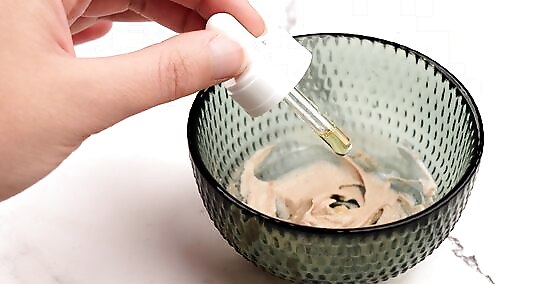
Adjust the coverage of the foundation, if desired. This recipe is for medium-coverage foundation. This may be more than what you are looking for, or it might not be enough. Fortunately, this is easy to fix: If you want more coverage, stir in more powdered foundation. If you want something more sheer, add more facial oil or moisturizer.
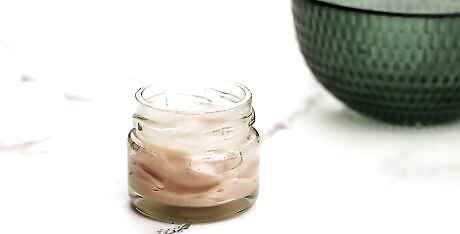
Transfer the foundation into a small, clean jar. How big this container is depends on how much foundation you made; it should be small enough to fit most of your foundation, however. An old foundation bottle or a lip balm jar would be ideal. Make sure that the container is clean. Wash it with soap and water, then dry it with a paper towel. You can sterilize it further with rubbing alcohol, if you want. A foundation bottle with a pump would be an even better idea. This way, you won't contaminate it by exposing it to air.
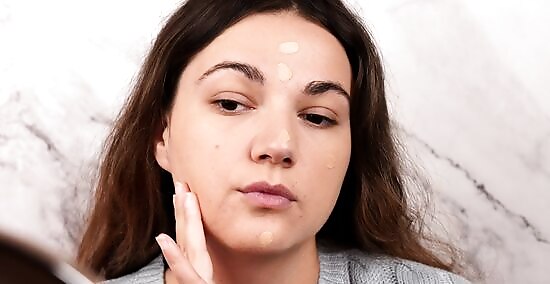
Apply the foundation, let it dry, then apply powder. Use makeup sponge, a foundation brush, or your fingers to apply the foundation and blend it in. Let it sit and dry for a few minutes, then apply your desired setting powder or blush. If you put the foundation into a jar, it would be best to apply it with a brush or sponge, otherwise you risk contaminating it with your fingers.
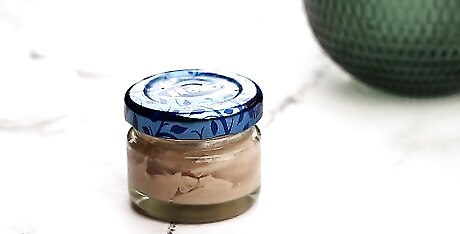
Store the foundation in a cool, dry place. This foundation should last a long time, but it may discolor or develop mold, especially if it gets wet. If any of this happens, discard it.

















Comments
0 comment